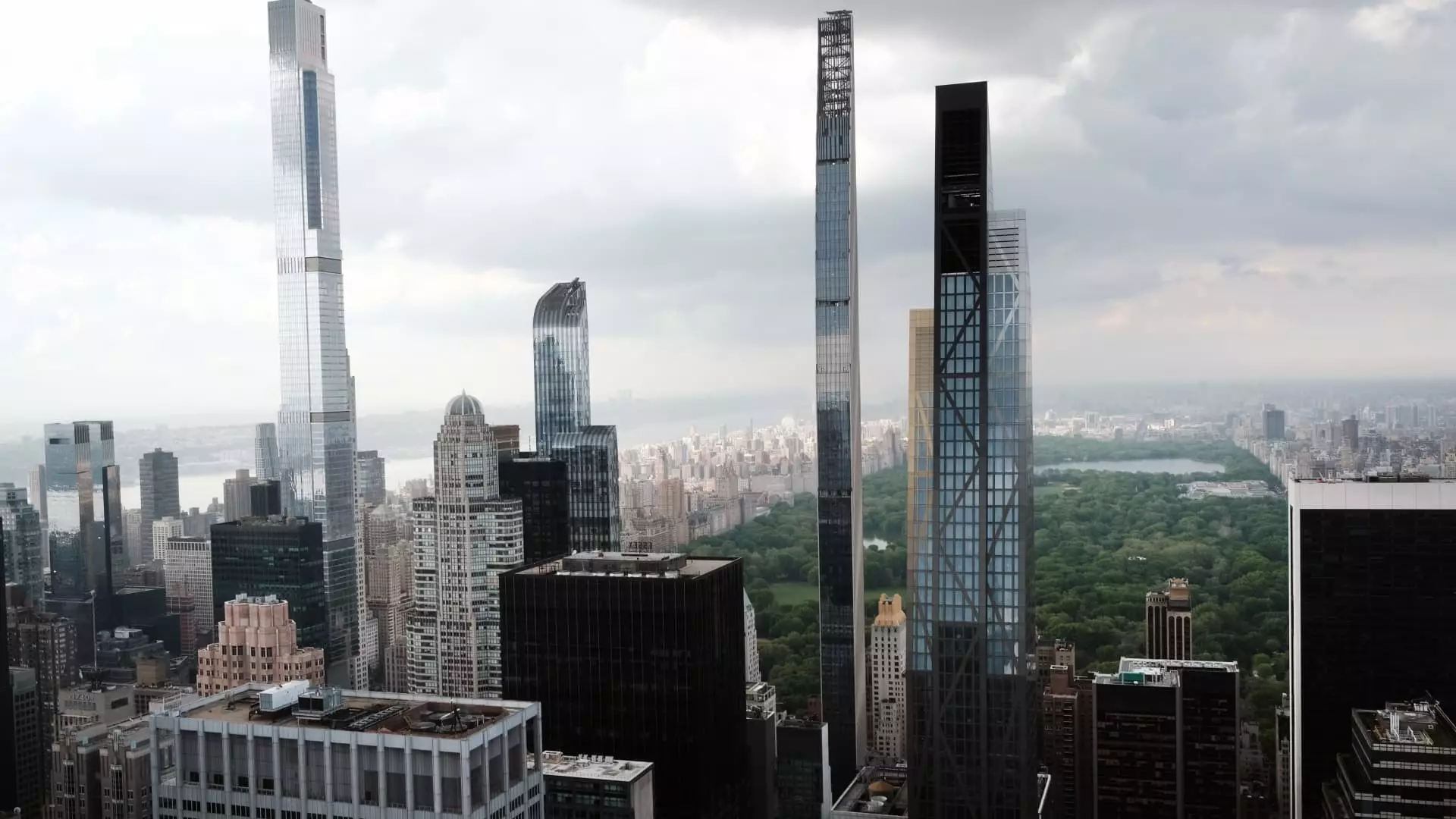The Manhattan real estate market has experienced a remarkable transformation in the first quarter of 2024, with apartment sales climbing a staggering 29% compared to the same period last year. This surge is not merely a statistic—it’s a clear indication that wealth is being repositioned in the face of stock market volatility. With 2,560 closed sales hitting the records compared to 1,988 last year, the total value of sold apartments raised eyebrows, reaching $5.7 billion—a 56% jump that illustrates the robust recovery in luxury real estate.
Wealthy buyers have shifted their focus from stocks to tangibly appreciating assets, emphasizing the lessons learned from the unpredictable swings of the financial market. It is evident that the affluent are not merely seeking shelter for their investments; they are seizing the moment to solidify their portfolios with real estate. The dominance of ultra-high-end properties—those listed over $20 million—has been particularly telling; sales in this category have not only rebounded but appear to have reinvigorated aspirations for opulence among buyers.
Disparity Within the Market
Yet, the narrative of success in Manhattan is not universally positive. While luxury sales are flourishing, the so-called “mid-market” segment, comprising properties between $1 million and $3 million, has seen a disconcerting decline of 10% in signed contracts. This is a stark reminder that prosperity is not evenly distributed; instead, it highlights an emerging divide within Manhattan real estate. The lower-end market, with properties priced from $500,000 to $1 million, seems to be holding its own, but it provides little comfort to those aimed at or reliant on mid-tier investments.
The correlation between wealth and asset acquisition suggests that the very financial strategies that have bolstered the high-end market may be a hindrance to the mid-market segment. As luxury attracts all-cash buyers—58% of sales in the latest quarter—those navigating lower price points often face the cautionary tales of fluctuating interest rates and economic uncertainty. This illustrates a significant gap in consumer confidence that could have longer-lasting implications for the health of the real estate market in Manhattan.
Returning to Roots: The Boomerang Wealth Movement
Interestingly, the market is also witnessing the phenomenon of the “boomerang wealthy”—individuals who fled to locations like Florida during the pandemic but are now making their way back to the urban oasis that is New York City. This trend signals not only a return to roots but also a re-evaluation of lifestyle choices among the affluent. Big banks and corporations mandating a return to office work are not merely driving business back into Manhattan; they are luring a cadre of wealthy buyers who desire proximity to their careers along with a vibrant city life.
There’s a certain optimism woven into the fabric of these demographic shifts. As the great wealth transfer unfolds—with trillions passed down from baby boomers to their heirs—new buyers are taking the reins of Manhattan’s luxury real estate. These trust-fund progenies, often supported by family offices and their long-term investment strategies, are transforming the landscape, making strategic acquisitions that promise generational impact.
The Future of Manhattan Real Estate
While current statistics demonstrate an undeniable upswing, it’s essential to maintain realistic expectations. The sales that transpired in the first quarter were largely influenced by negotiations that occurred months before, and the prevailing uncertainty that marked March may not be fully reflected in these figures. Furthermore, as Jonathan Miller of Miller Samuel aptly points out, while the 29% increase seems impressive, it slightly exceeds the historical average by just 1.1% over the last decade.
Nonetheless, as contracts signed in March indicate an optimistic outlook—especially for luxury sales which have tripled for properties over $10 million—the trajectory seems positive. It’s becoming apparent that Manhattan’s real estate market isn’t just holding steady; it is evolving into a promising realm filled with opportunities, albeit with a clear delineation between high-end and lower-end markets. Amidst this resurgence lies the burgeoning sentiment that the future of Manhattan real estate could indeed continue to thrive against all odds, echoing the resilient spirit of the city itself.

